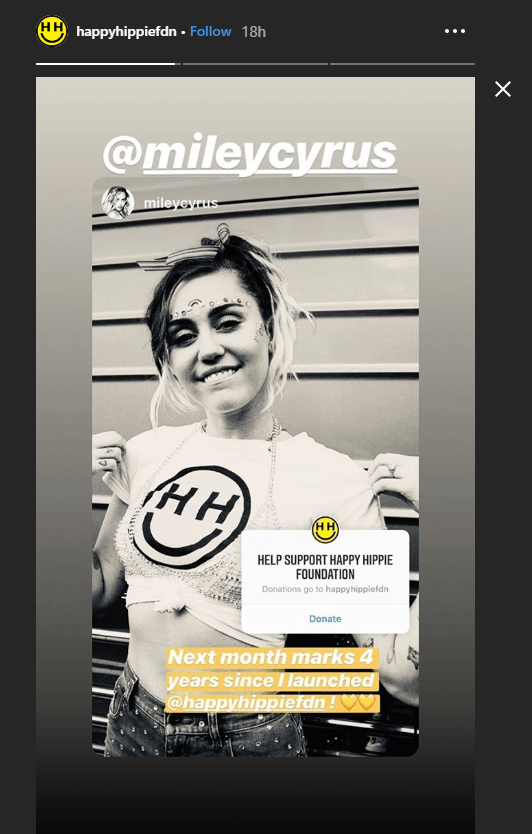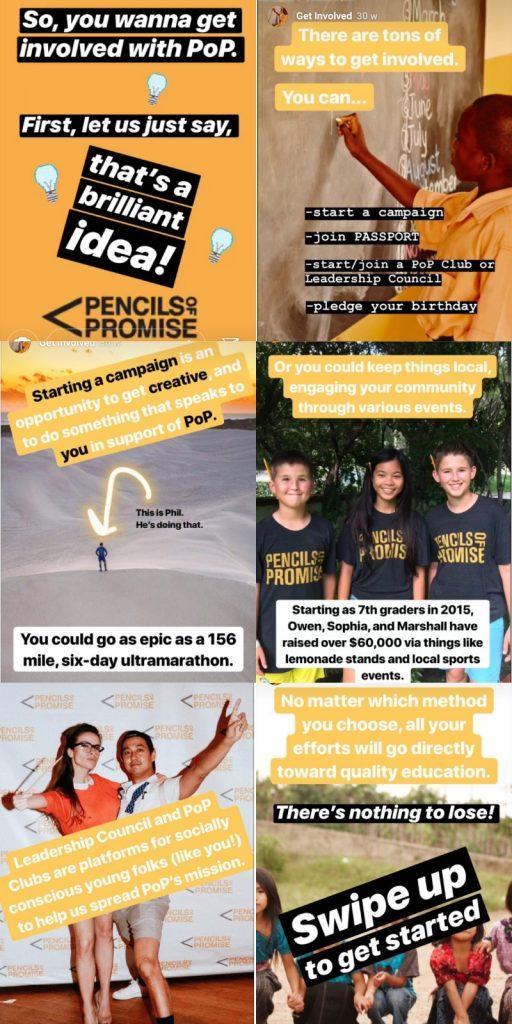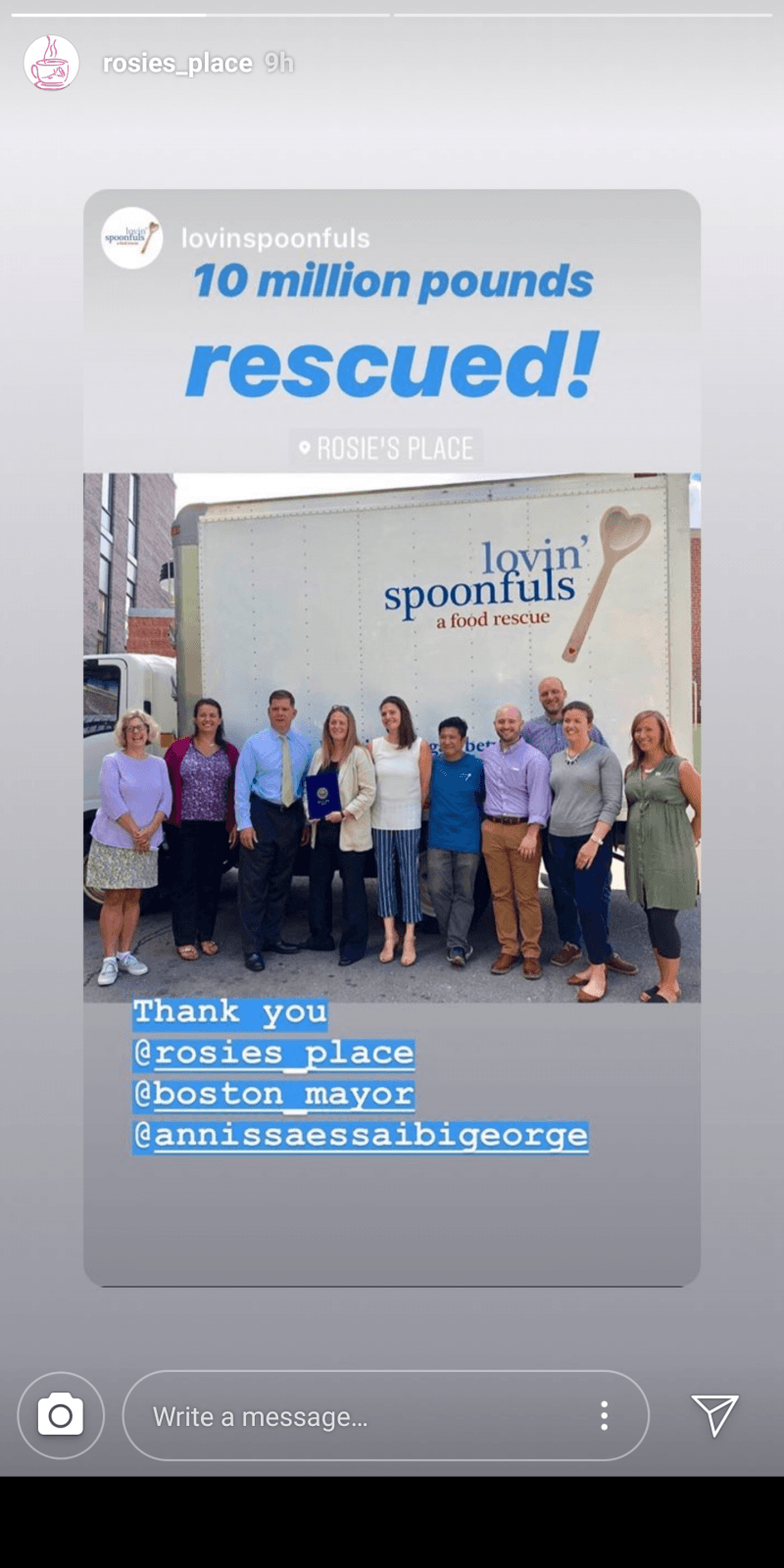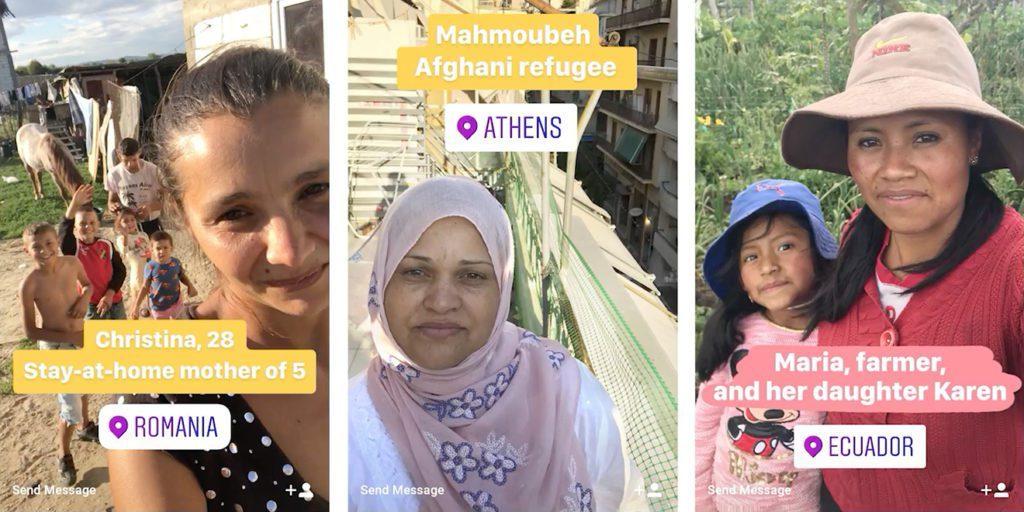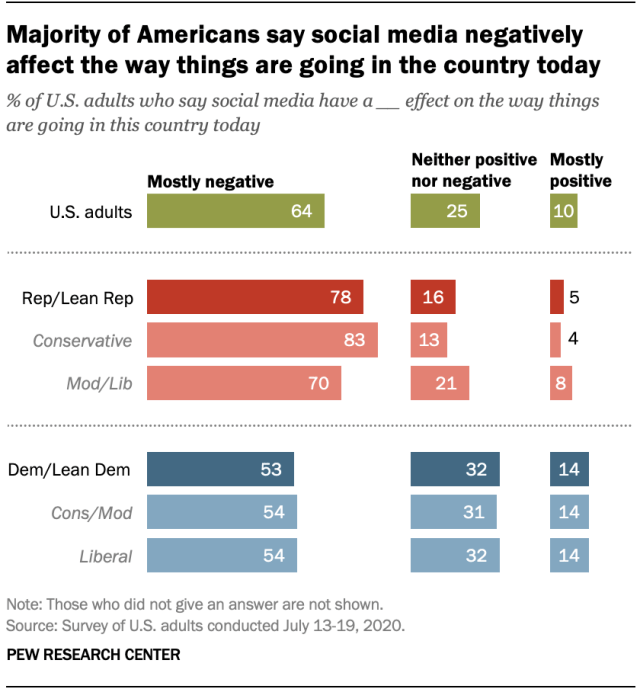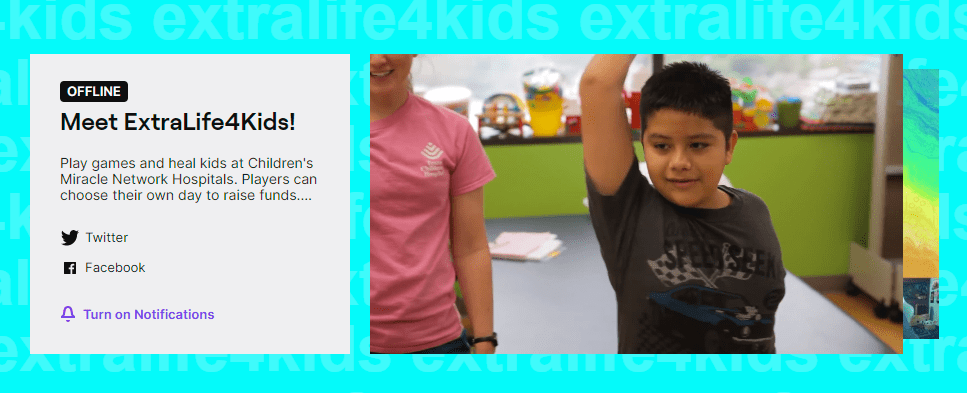Social Media for Social Good Academy 2.0 is opening soon! Don’t miss out or lose your spot – get on the Early Interest List by clicking here.
What’s on tap for nonprofit marketing as we enter 2021?
Which digital marketing trends do nonprofits need to understand and to be aware of?
After a year like no other, when we are online more than ever and socially distanced, it is vital that nonprofits understand the digital marketing landscape and adapt to trends that may benefit them and their donors.
Here are what I see as the top 10 social media trends nonprofits should watch out for in the coming year:
1. Artificial Intelligence and Chatbots are here, and nonprofits need to get on board.
This is a big one, and I can’t claim to be a full-blown AI expert.
I have curated stories, examples, and resources on this topic on a Pinterest board (free to access): AI and Chatbots for Nonprofits
Beth Kanter wrote an illuminating op-ed for The Chronicle of Philanthropy on the age of automation and it implications for fundraisers.
Kanter also compiled a great list of chatbots that nonprofits can study, research, and use for ideas and inspiration.
As an example, Susan G. Komen Florida implemented a chatbot, using ManyChat, as a way to provide ease of access to resources and information. During their annual Race for the Cure, Komen Florida’s chatbot answered important questions to race participants.
Nonprofits, even small ones, need to begin to understand at least what a chatbot is and how it works.
Direct Relief & Mind Heros created the free service Bots for Charity specifically to help nonprofits leverage this technology. Check them out here: https://botsforcharity.com/

2. “Alexa, tell me about the Internet of Things.”
The Internet of Things, or IoT, refers to the billions of physical devices around the world that are now connected to the internet, all collecting and sharing data.
These include the helpful virtual assistants we have on our phones, in our watches, and inside our homes.
Nonprofits are building Alexa Amazon skills to reach new audiences and build relationships with potential donors. In 2019, Amazon led the smart speaker market, shipping 10.4 million Alexa units worldwide.
Consider these nonprofit examples:
- The National Audubon Society – Audobon Bird Songs
- The NRDC and the Ad Council – Save The Food
- Mayo Clinic – Mayo Clinic First Aid
- The American Heart Association – American Heart
You can create your own Alexa skill for free at: https://developer.amazon.com/alexa-skills-kit/tutorials
3. The Facebook reckoning and social media exodus.
Did you know that the majority of Americans say social media negatively affect the way things are going in the country today?
The social media backlash means that a slew of other apps are surging in popularity, including Parler, Whisper, VSCO, and more.
Parler is increasing in popularity among right-wing pundits who don’t want to be fact-checked. The service explicitly describes itself as “a non-biased, free speech social media focused on protecting user’s rights.”
Whisper is a mobile app is a form of anonymous social media, allowing users to post and share photo and video messages anonymously.
VSCO touts itself as “metric-free social”. It’s not free to download and use, but it’s still popular. VSCO is on pace to surpass 4 million paying users in 2020, up from 2 million paying users in late 2018, the company said. Approaching $80 million in annual revenue, VSCO charges an annual subscription fee of $19.99 for access to a full-suite of mobile photo-editing tools, exclusive photo filters, tutorials and more.
And what about apps that are just pure silliness and entertainment?
With the Yo app, you simply send one word – “Yo” – to friends.
The Binky app bills itself as “your nicotine patch for social media.” Posts are called Binks, and you can comment, like, re-Bink, swipe left and swipe right. However, it doesn’t connect to anyone or anything. According to the site: Binky is an infinite feed of random things (“binks”) to look at. What will come up next? Cauliflower? Diana Ross? Keep scrolling to find out! Unlike similar apps such as Facebook, Twitter or Instagram, Binky won’t stress you out or make you hate your friends. It just keeps your attention where it belongs: on your phone.
4. People are craving more human content, specifically via video.
The most effective way to combat the social media backlash and to get more engagement (when engagement is plummeting is to become even more accessible and human online.
People want access, authenticity, and transparency. Use video to lift the veil on your work.
In this same vein, people prefer to interact with amateur content than super polished and posed accounts.
How to jump on the trend of human-centered video? Go live on your favorite social media channel.
- Regular Facebook video sees an average of 135% more organic reach than images.
- Facebook users spend 3x more time watching live videos than a video that’s no longer live.
- They also comment more than 10x more during live videos.
Trend to watch: Live streaming shows replacing network TV.
- Shows are on at the same day and time every week, like a network TV show.
- Can be streamed with a smartphone or with sophisticated equipment.
- People are creating regular shows to humanize their brand and build a dedicated community of followers.
- Shows, much like podcasts or blogging, are consistent and have specific topics each week.
University presidents talk to alumni through livestream during campus giving days.
The Humane Society goes live from the field.
The New York Public Library goes live from events.
For many more examples and tips, check out this post: 8 Ways to Use Live-Streaming Video to Share Stories as They Happen
5. Livestream fundraising via gaming platforms like Twitch are forces to reckon with.
I have to admit that before this year, I had never watched anything on Twitch – the most popular live streaming platform in the world.
Launched in 2011 by Justin Kan and Emmett Shear, the online video platform is comparable to sites like YouTube or Vimeo, except that it focuses exclusively on live video.
15 million users tune in to watch an average of 1.5 hours of Twitch live streams each day.
During Suicide Prevention Awareness Month, the Seize the Awkward campaign ran a three-day Twitch event to raise funds for their mental health work.
More info: Going Live: How Nonprofits Are Reaching Younger Donors by Streaming Games Online
6. Rise of mobile giving apps and mobile payments.
As younger generations move into the philanthropic sector, mobile giving apps are on the rise.
Here are three nonprofit-focused mobile apps to watch:
Point app – Connecting would-be volunteers to local volunteer opportunities
As reported in the Columbus CEO magazine: Madison Mikhail Bush was sitting in her dorm room one evening, feeling frustrated.
“It was 11 p.m. and I knew that with my phone, I was able to order any type of food I wanted for delivery,” Bush says.
“But there was a soup kitchen down the street and I didn’t know how to help.”
She tried to call the soup kitchen on the phone several times, but found the process to be cumbersome, tedious, and just not worth her time.
Then she looked at her phone – the device where she made most of her purchasing decisions.
She thought, “What if there’s another way?”
What if signing up to volunteer at a local organization was just as simple and easy as ordering food, booking a flight, or making a purchase – using your smartphone?
So Bush designed the mobile app POINT, which allows users to pick the causes they are interested in and indicate when they are available to volunteer, for example, mornings or weekends.
The app them finds local needs that fits those parameters.
In total, over 300 nonprofits and more than 16,000 individuals are officially using POINT.
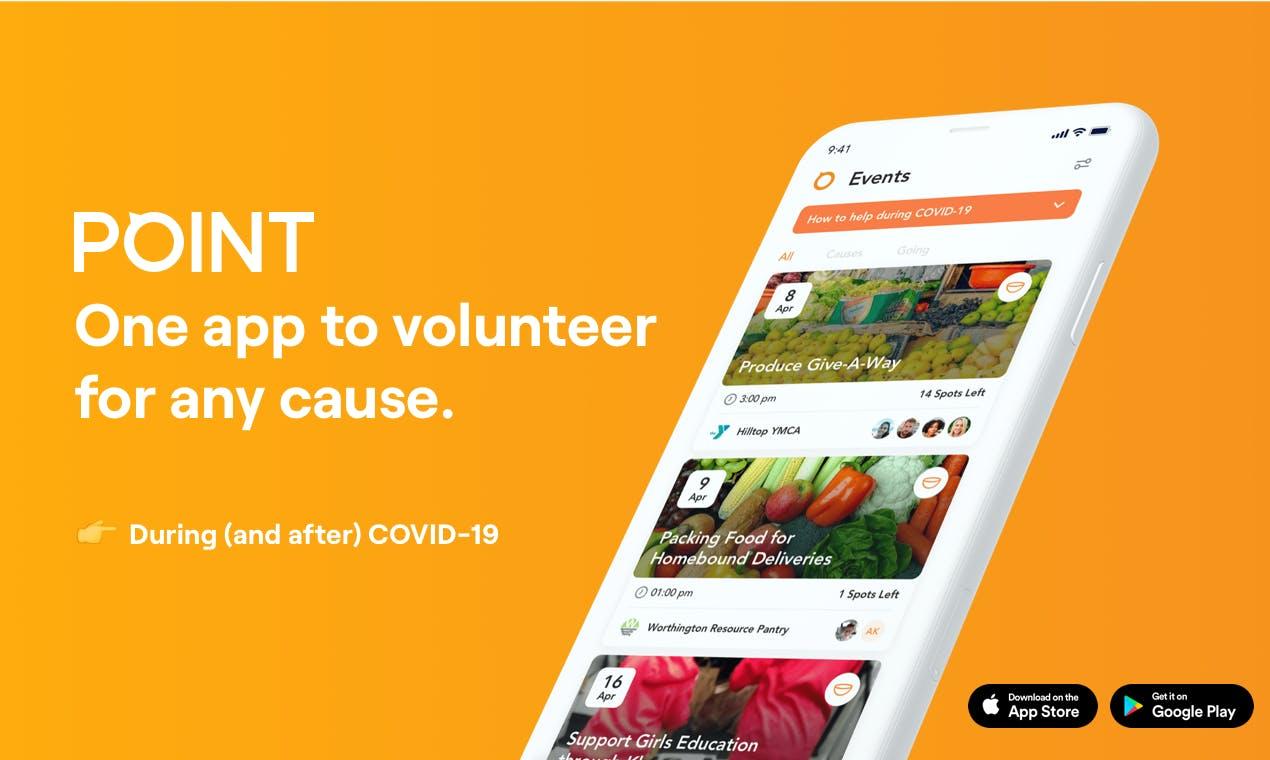
Mille app – Tinder for charity
Rachel Klausner, Millie founder and CEO, wants younger people – specifically millennials – to become more PROACTIVE about giving.
“The way that millennials tend to give is through these random one-off, peer-to-peer asks,” she told Fast Company.
“It’s very reactive giving. And I was wondering, ‘Can we make people more proactive and thoughtful about giving?’”
Klausner then analyzed the different features of the popular mobile apps to which people were already addicted, to see what they had in common.
While nonprofits do not directly get the individuals contact information, Millie is building a messaging feature into the app for organizations to connect with their donors through the app.
Nonprofits also have the ability to add modules to their profile that highlight in-person activities like volunteering or events, and can target them around specific zip codes.
For users, the act of giving is fun, and there is a sense of urgency with gamification features such as countdown timers and comparing your giving history to your friends.
Donors pre-load their accounts with cash, and they can lend funds to friends.
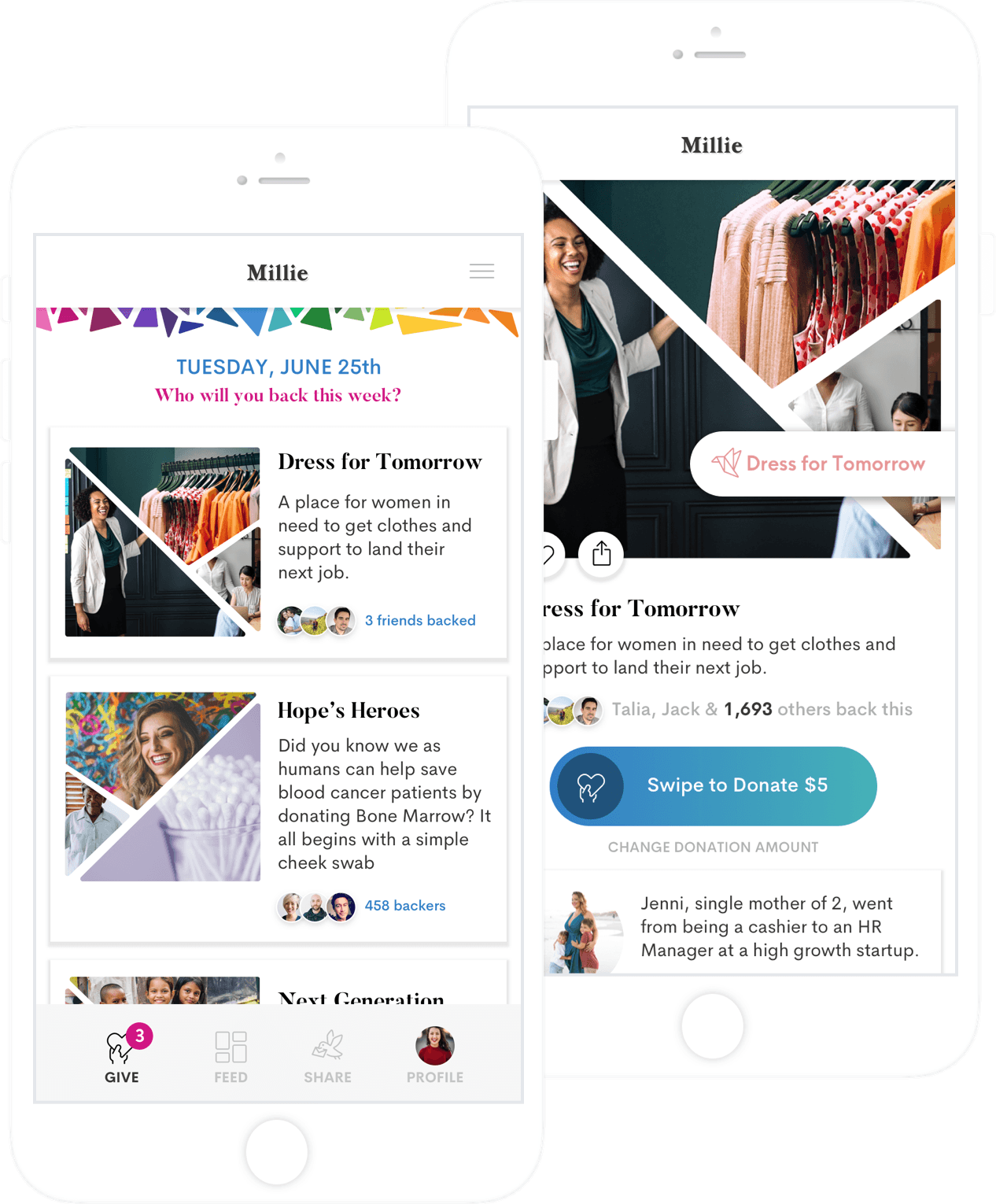
Budge
On the Budge platform, a user chooses a ‘Budge’ (a challenge or task), a charity, and a dollar amount, then challenges a friend.
For example, “I will give $2 to Breastcancer.org if you wear pink socks for a day.” Or, for a messy roommate, “You do the dishes tonight” and I will give $5 to charity.
If the friend does not complete or win the specified challenge, they donate.
All Budges are posted in the app’s newsfeed too, so your social circle can get in on the action.
As they put it, “Simply put, we are disrupting charitable giving by making the process both easy and accessible, allowing people to challenge their friends to do anything on behalf of a meaningful cause.”
The explosive popularity of mobile payments should make nonprofits sit up and take notice. Why not make it as easy as possible to receive donations, from anyone, anywhere, on any device?
Some of the most popular:
- Venmo – Nonprofit payments is in beta.
- PayPal for Nonprofits – https://www.paypal.com/us/webapps/mpp/donations
- Apple Pay for Donations – https://developer.apple.com/support/apple-pay-nonprofits/
- Google Wallet for Donations – https://googlefornonprofits.blogspot.com/2012/10/grow-your-gifts-increase-online.html
- iATS Payments – http://home.iatspayments.com/
- Stripe – https://wiredimpact.com/blog/stripe-for-nonprofits/
7. Interactive experiences through AR and VR.
Rhodri Davis of the Charities Aid Foundation calls VR and AR for nonprofits “empathy machines” and Mark Zuckerberg calls these technologies “the holy grail of social experiences”.
Augmented reality experiences like 360 degree photos are exploding in popularity, especially on Facebook.
This is where you can place yourself at the center of the experience and use “360 Photo” through the Facebook app to take a full 360 degree panorama.
You can also use the Lookabout app: http://www.lookabout.io/
Facebook Spaces is a virtual reality app where you can hang out with your friends in a fun, interactive virtual environment.
Examples:
- Visit Philly – 360-degree virtual tour: http://www.visitphilly.com/virtual-tour/
- Four Walls – https://www.rescue.org/four-walls
- Beginning – https://youtu.be/SelvUz8Zr3k
In 2015, Pencils of Promise wanted to increase donations at their annual celebrity-studded gala and used a VR experience to do so.
PoP knew if they could show attendees what it was like to go to school in a developing nation, it could create an unmatched emotional connection that might inspire more donations for their students. So, at their gala, they gave attendees VR headsets that transported them to a school in Ghana.
The results were stunning. The VR experience helped PoP raise an additional $500,000 for a total of $2.4 million that evening in response. Plus, their video was viewed nearly two million times on Facebook.

8. No touch donations.
With the COVID-19 pandemic sweeping the globe, it’s no wonder that zero-touch donations are taking off.
“Near field communication” is one such technology.
Cancer Research UK introduced contactless giving at four shop windows to enable passers-by to make donations through the window at any time of the day or night.
By simply tapping their contactless debit or credit card on the window of one of the shops, people will be able to donate £2 to the charity.
Animal charity Blue Cross has started to fundraise using dogs that wear coats that handle contactless donations from mobile phones.
“Using a dog coat, we’ve sewn a pocket into it that holds the contactless payment device. Each time we tap the donation device it gives a £2 payment to Blue Cross”.
Salvation Army is moving to mobile payments to supplement it’s traditional red bucket donation model.
“People don’t carry cash. So we have to adapt,” said the Salvation Army’s Brian Molohon. The charity hopes adding Apple and Google payment options will boost giving to the red kettle campaign, which makes up 10% of its annual fundraising.
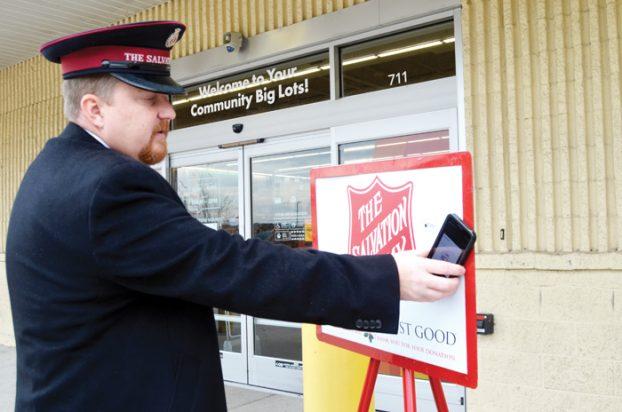
9. Peer-to-Peer (P2P) fundraising on social media is growing, specifically through Facebook Fundraising and donated birthdays.
YouTube Giving tools are also ones to watch, but they don’t have the user-friendly aspect of Facebook fundraisers (at least, not yet).
My recommendation is to get registered with Facebook Fundraising tools by going to donations.fb.com and then creating a strategy to get people to set them up and raise money for you in 2021.
On Giving Tuesday last year over $125 million was raised via Facebook Fundraising. About 1.1 million people started or donated to a Facebook Fundraiser on #GivingTuesday and about 97,000 nonprofits benefited.
It’s not a silver bullet, and it’s certainly not EASY, but the principles of success are simple.
I talk about about Facebook Fundraising in much more detail in previous blog posts and Facebook Live videos.


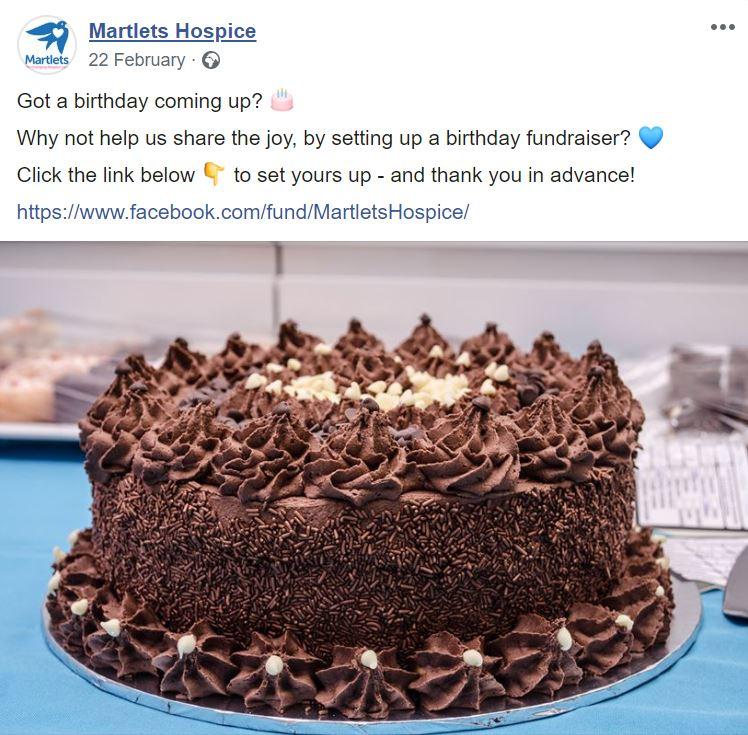
10. Ephemeral content apps are growing at a rapid pace.
Ephemeral content is content – videos and photos – that disappear after 24 hours. Think Snapchat and Instagram Stories.
Even if your nonprofit is small and on a shoestring budget, there are several benefits to setting up and implementing a solid Instagram Story strategy:
- Stories are incredibly popular and run in chronological order – no algorithm here!
- Stories put a more human face on your nonprofit and make it more accessible.
- Share real-time updates about news, announcements, campaigns, events, and more.
- Create a sense of urgency and relevancy by sharing photos and video snippets as they happen.
Your nonprofit should always be trying to connect with and build up new audiences – don’t rule it out just b/c your baby boomer donors don’t use Stories.
And that coveted younger audience you want to reach so desperately? They are on there!
For more information on how to use this kind of content, check out my Pinterest board: Instagram and Snapchat for Nonprofits.
